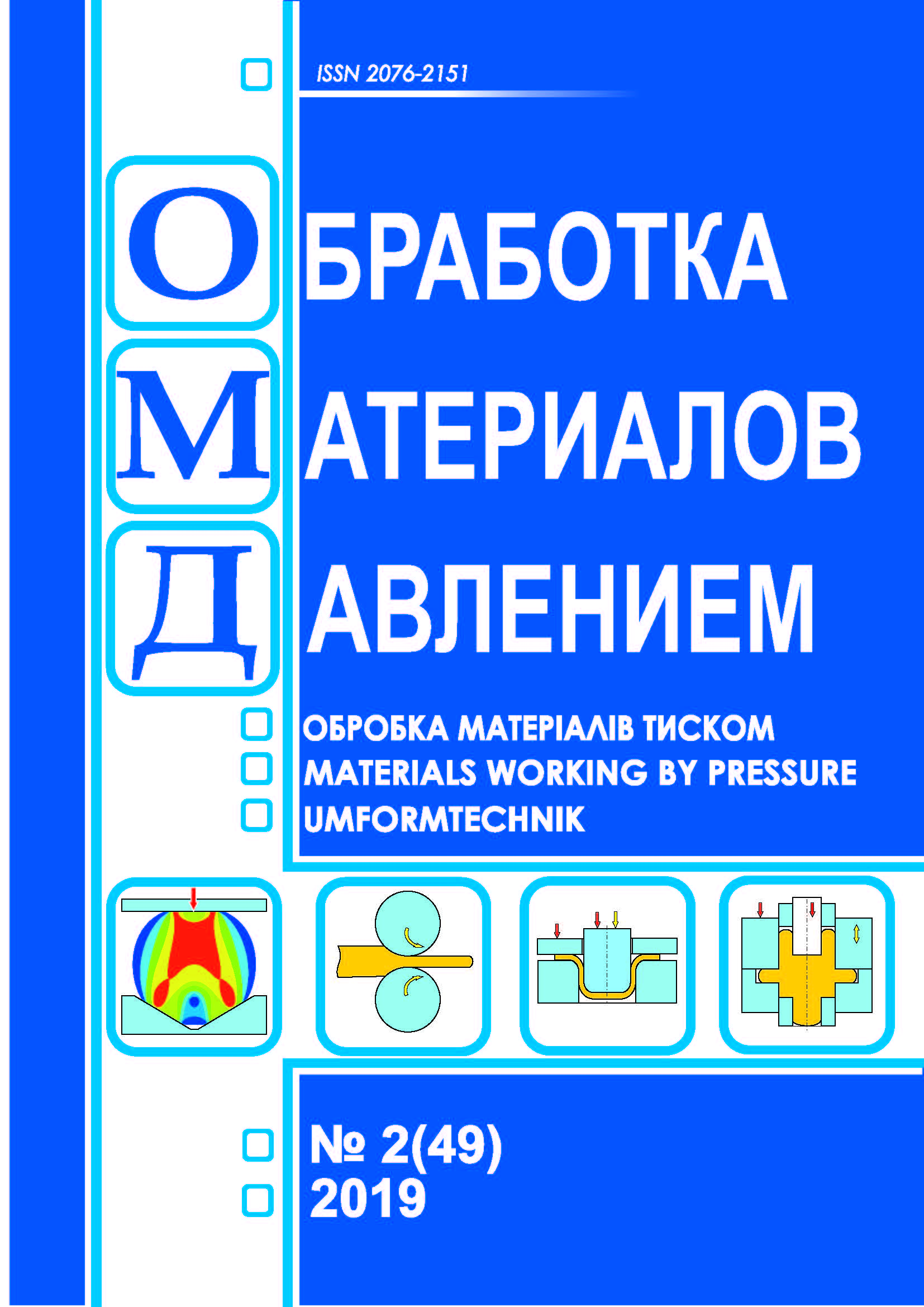Study of a deformed state during plastic turning by high pressure
DOI:
https://doi.org/10.37142/2076-2151/2019-2(49)47Keywords:
high pressure torsion; matrix; strain state; stress state; simulation; deformation cycle; deformation force; temperature.Abstract
Volokitina I. E., Panin Ye. A., Volokitin A. V. Study of a deformed state during plastic turning by high pressure // Material working by pressure. – 2019. – № 2 (49). - Р. 47-54.
Design of technological processes of metal forming at the present time involves the solution of a number of very complex problems. The main goal is to identify the regularities of the process, the significant factors and parameters that affect its course, to assess their possible impact on the performance properties of the resulting products. The obtained data allow to form the information field of a specific technology and control both the process and the properties of products. To verify the implementation of the high-pressure torsion (HPT) method in the new matrix, the process was simulated in the Deform 3D package, which allowed to identify the "weak points" of the process, to estimate the stress-strain state of the workpiece at each transition of the cycle, the deformation intensity obtained for one full cycle of this method, as well as the required deformation force. All these factors are necessary to assess the implementation of the method, as well as the design of tool, the choice of power equipment for the experiment, on the basis of which it is possible to judge the degree of change in the structure of the workpiece material. By results of modeling and on the basis of the analysis of a stress-strain state the possibility of providing deformations of shift in the processed metal is shown. As a result of the model study with several deformation cycles, it was found that with increasing number of passes, not only the overall decrease in the average grain diameter occurs, but also the gradual alignment of this parameter between the central and surface zones.
References
Lezhnev S.N., Krivtsova O.N., Ibatov M.K., Samodurova M., Panin E.A., Modeling of the stress-strain state of rolling rolls. Materials Working by Pressure. Kramatorsk: DSEA. 2013. 3 (36), pp. 86-89. (in Russian).
Naizabekov A.B., Lezhnev S.N., Panin E.A., Krupenkin I.I. Evaluation of the effectiveness of new energy-saving technology for rolling a thick plate based on computer simulation. Materials Working by Pressure. Kramatorsk: DSEA. 2016. 2 (43), pp. 104-110. (in Russian).
Shaeri M.H., MSalehi.T., Seyyedein S.H., Abutalebi M.R., Park J.K. Microstructure and mechanical proper-ties of Al-7075 alloy processed by equal channel angular pressing combined with aging treatment. Materials and De-sign. 2014, 57, pp. 250-257.
Kargin V.R., Kargin B.V., Erisov Y.A. Press modeling in the DEFORM-2D program. Samara. 2010, 106 p. (in Russian).
Sotov A.V., Smelov V.G., Agapovichev A.V., Kartashov R.D. Modeling metal forming processes in the De-form software package. Samara: Publishing house Samara University. 2017, 47 p. (in Russian).
Ahmed Drai. Analysis of the temperature effect on the plastic strain of polymers during high pressure torsion (HPT) process. The Eurasia Proceedings of Science, Technology, Engineering & Mathematics (EPSTEM). 2013, 1, pp. 41-51.
Aour B., Zairi F., Gloaguen J.M., Nait-Abdelaziz M., Lefebvre J.M. A computational study of die geometry and processing conditions effects on equal channel angular extrusion of a polymer. International journal of mechanical sciences. 2008, 50, pp. 589-602.
Mousumi D., Goutam D., Mainak G., Matthias W., Rajnikant V., Ghosh C.S. Microstructures and mechani-cal properties of HPT processed 6063 Al alloy. Materials Science & Engineering. 2012. A558, pp. 525-532.
Rybin Yu.I., Rudskoy A.I., Zolotov A.M. Mathematical modeling and design of technological processes of metal forming. St. Petersburg: Nauka. 2004, 644 p. (in Russian).

